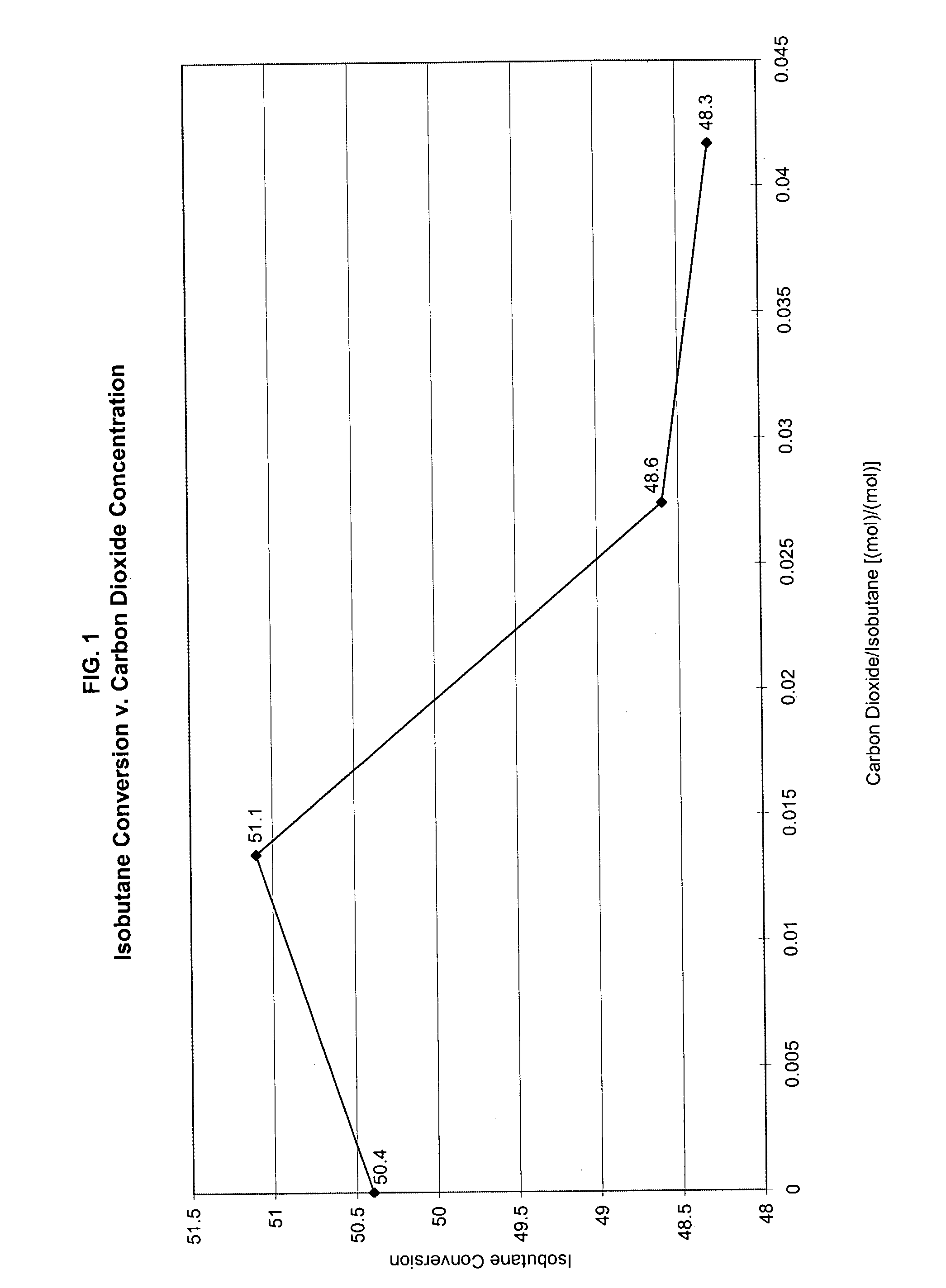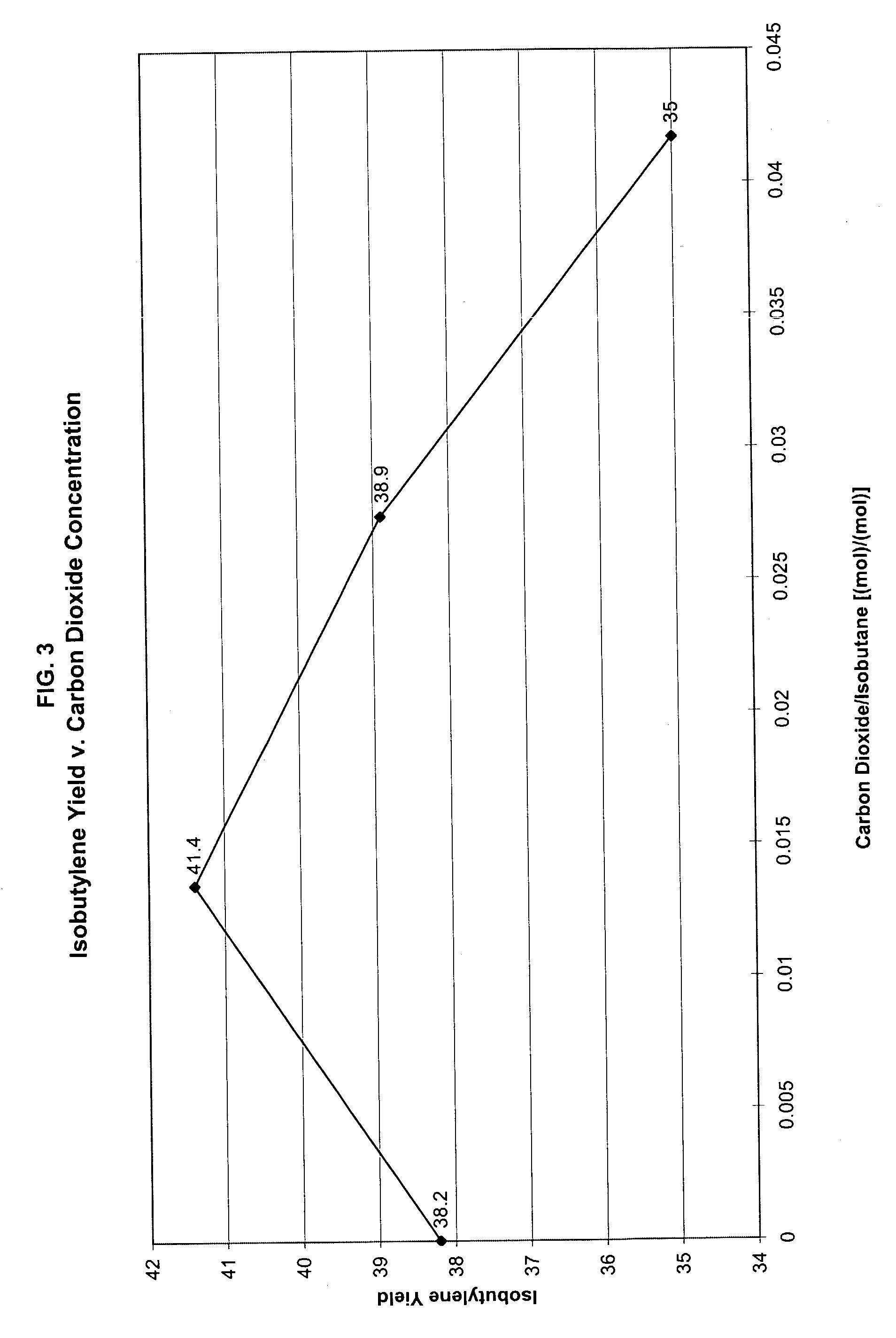Carbon dioxide promoted dehydrogenation process for olefins
a dehydrogenation process and carbon dioxide technology, applied in the field of olefin production processes, can solve the problems of reducing the selectivity of alkene, reducing the cost effectiveness of satisfying the demand of expensive cracking units, and both processes simultaneously provide a wide range of other products with limited flexibility, so as to achieve high alkane conversion and increase the selectivity of olefins
- Summary
- Abstract
- Description
- Claims
- Application Information
AI Technical Summary
Benefits of technology
Problems solved by technology
Method used
Image
Examples
examples
[0046]The invention will now be more fully described and understood with reference to Examples 1 through 10. These examples are given by way of illustration and the claimed invention is not limited by these examples.
[0047]The following Examples 1–4 demonstrate the function of CO2 vs. O2 and methane addition as gaseous promoters. CO2 is normally considered as a mild oxidant, whereas CH4 has no oxidation properties. In Examples 1–4 the following procedure was utilized. The catalyst was a commercially available chromium-alumina based dehydrogenation catalyst containing 14% chromium and manufactured by spray dryer method (catalyst T-2715 from United Catalyst, Inc.).
[0048]Five or one grams of the catalyst were loaded in a standard SS fixed bed reactor constructed of a 1-inch tube. A ⅛ inch thermowell was located axially in the reactor tube to enable temperature measurement. The reactor was placed in an oven heated electrically for maintaining the desired temperature. The reactor effluent...
PUM
| Property | Measurement | Unit |
|---|---|---|
| pressure | aaaaa | aaaaa |
| temperature | aaaaa | aaaaa |
| temperature | aaaaa | aaaaa |
Abstract
Description
Claims
Application Information
 Login to View More
Login to View More - R&D
- Intellectual Property
- Life Sciences
- Materials
- Tech Scout
- Unparalleled Data Quality
- Higher Quality Content
- 60% Fewer Hallucinations
Browse by: Latest US Patents, China's latest patents, Technical Efficacy Thesaurus, Application Domain, Technology Topic, Popular Technical Reports.
© 2025 PatSnap. All rights reserved.Legal|Privacy policy|Modern Slavery Act Transparency Statement|Sitemap|About US| Contact US: help@patsnap.com



